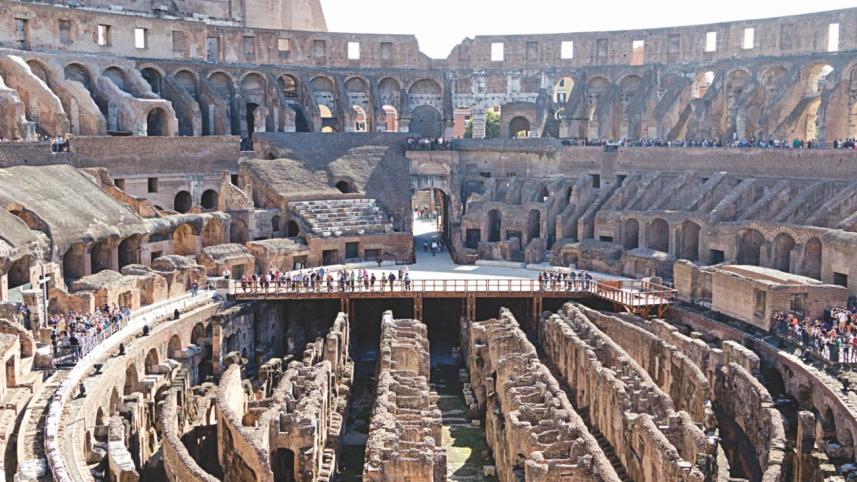Rome Again

Last week I wrote about birding in Rome. Of course I saw other things during my recent trip.
The fortunes of Rome rose and fell over the centuries. Ancient Rome started growing around 200 B.C. and became an empire that declined by 500 A.D. The Dark Ages followed. Then the Renaissance lasted from about 1400-1700 A.D. Modern Rome became the capital of Italy in 1871.
For the engineer in me, the most interesting parts are the creations of the ancient Roman Empire.
A story about Florence will illustrate Rome's engineering largesse. During the Renaissance, roughly a thousand years after the collapse of the Roman Empire, city-states in Italy grew wealthy from trading. Florence was one such place. It decided to build something commensurate with its new status. So there was a design competition. The winning design, by Filippo Brunelleschi, was for a large dome over the Cathedral of Florence.
There was only one problem: no one knew how to build this dome. It took Florentine engineers over a hundred years to figure out how to build it.
But the ancient Romans had built domes a thousand years earlier. One stands out in particular: the spectacular Pantheon in Rome. I am awestruck by its beauty every time I enter it, feeling like I have entered the chamber of a spaceship. No wonder it inspired many - including the Florentine architects.
It turns out that the ancient Romans had used concrete to build the Pantheon's dome. But concrete was forgotten during the Dark Ages, so Florence's engineers, ignorant of it, had to essentially re-invent the wheel.
The philosophical and aesthetic works of the ancient Romans might not be comparable to Greek or Renaissance art. But in practical, everyday things, their contributions were unparalleled. Even today, their innovations in engineering and the law are in use.
Take, for example, the aqueduct. Rome during its peak had a million people who needed water, sewage and roads. There was plenty of water flowing in the surrounding hills, but how to supply to the city? The aqueduct, a very long water pipe made of stone, concrete or brick, was the answer. Aqueducts were made with a precise downward slope over many kilometres so gravity moved the water. Most aqueducts were underground, but some were overground. Some aqueducts are still in use today.
When you are ruling a vast empire, roads are important. Romans excelled at building roads. Their roads were straight. Even today, the Via Appia (or Appian Way), connecting Rome to Brindisi, is the longest straight road in Europe at 62 kilometres.
The genius of Romans was their pragmatism. Although brutality was commonplace, Roman citizens could vote and had rule of law. Slaves could attain freedom and citizenship. Rome's ruling oligarchy was shrewd enough to involve the masses in political process and provided services and entertainment.
Thus we have the stadium called the Colosseum, built over 2000 years ago. It could hold up to 80,000 spectators divided into several levels. Engineering was cutting-edge. For example, I saw liberal use of iron bolts to support columns and walls. The cheapest tickets were for standing-room galleries on the top. Royalty and aristocrats sat close to the stage. Greenrooms were under the stage which had trapdoors to access them. Events included gladiator contests, animal hunts and even executions.
Wandering in the city, I easily understood why Rome is called The Eternal City.
facebook.com/tangents.ikabir



 For all latest news, follow The Daily Star's Google News channel.
For all latest news, follow The Daily Star's Google News channel.
Comments